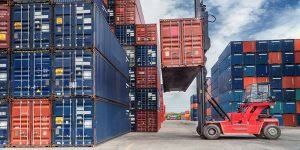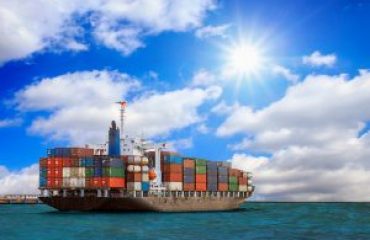Overview
The freight forwarding process simply refers to the flow of shipment and goods from two destinations carried out by a freight forwarder such as Love Uganda Logistics (LUL). It is important for businesses and other organizations to know what really happens during the trans-border transportation of goods from one destination to another. Shipping items in and out might is usually an opportunity for businesses to grow and expand both locally and internationally, however, it can become very complex easily. It is this nature of the logistics’ complexity that calls for freight forwarders to come and intervene.
Who are freight forwarders?
The best word that can describe freight forwarders is “Middlemen” during cargo shipping whether on land, air or water. They are the ones responsible for shipping much as they do not do the shipping themselves. This is why freight forwarders should have the knowledge of the forwarding process because any mistake may see the entire company down. It’s important that they understand international trade, the regulations of trade and how to ship on behalf of a company that requires shipment throughout the world.
The primary objective of freight forwarders is ensuring that clients’ goods are transported and delivered on the specified date. It is them that face all the expenses and challenges between the time of pickup and the time of delivery. These may include documentation, taxes, packaging, sorting, to mention but a few.
Why is it Important to use freight forwarders to transport my goods?
Transporting your goods using freight forwarding companies may seem costly yet it is one of the cheap ways of doing so. This is because it takes away the burden of undertaking the transportation process by yourself. The process involves quite a number of stages each with unique activities such as documentation, packaging, etc. These process are time consuming and may not be of help especially to businesses. Failure to use freight and forwarding companies means that you will do the job yourself. Having a transportation agency (freight forwarder) gives you more time to concentrate on your business. Because of their rapport with government and other service agencies, they are able to get work done smoothly, besides getting favorable rates, schedules, etc. They also ensure movement of goods from one point to another in the most cost-effective way.
What are the major stages of the freight and forwarding process?
Different countries have different laws governing entry and exit of goods. However, some of these rules and regulations / guidelines cut across.
Generally, freight forwarding process is made of 6 major stages and these include;
- Export Haulage
- Items checkpoint
- Export Customs Clearance
- Import customs clearance
- Destination Arrival And Handling
- Import Haulage
Stage one: Export Haulage
This is the beginning stage in the freight forwarding process. It involves movement of goods from a shipper’s location to the freight forwarders’ warehouse. Depending on the distance, the nature of the goods and the geographical location, goods can be transported using a truck or train. This stage does not have a specific length of time it takes. It can range from a few hours to few weeks depending on the nature of goods and their location. At this stage, the major parties involved are the forwarder and the owner of the goods (Client or business owners).
Stage two: Items Checkpoint
This stage follows export haulage stage and it involves the freight forwarder checking thoroughly to confirm whether all goods were transported without incident. It also depends on the nature of goods. Forwarders confirm if goods are in the right shape, color or size. Counting also takes place. The major party involved here is the freight forwarder.
Stage three: Export Customs Clearance
After the foods have been counted and confirmed as have been transported in stage two, the next thing to do is clearing with the relevant bodies at the Export Custom Clearance department in the country of their origin. This happens before goods are shipped off. Customs brokers are the ones who usually do this activity. The process involves a lot of documentation specifying the nature of the cargo and their destination. It is a very sensitive process. It is at this stage that an agreement between the shipper and consignee is reached. If a freight forwarding company does not offer this service, it is required to find a third-party Customer broker service. From this stage, goods are now good to go whether by land, air or water.
Stage Four: Import Customs Clearance
This is more like stage three but the difference is that goods are now imports in another country. The stage involves relevant documentation and confirmation that goods have arrived in a new country. Goods can be cleared even before their arrival depending on the speed of the forwarder. This is where dealing with professional forwarders such as Love Uganda Logistics makes a difference. They help your goods through these stages as in the shortest time possible since they have agents all over their areas of operation.
Stage Five: Destination Arrival and Handling
Upon arrival of the goods, they undergo quite a number of other sub-stages or processes. At this point, freight forwarders will receive all documents for the cargo, including outstanding documentation, carrier bills and more. The major party involved here is the Freight forwarder.
Stage Six: Import Haulage
This is the last and final stage during cargo or freight forwarding process. The stage is almost similar to stage one but the difference is that in the first stage the parties involved were the sender and the forwarder whereas here, it is the receiver and the forwarder who are involved. The stage involves the forwarder transferring goods from the warehouse to the receiver’s destination. The forwarder may choose to deliver them at the receiver’s doorstep or the receiver can pick them from the warehouse. The goods are now no longer in the hands of the forwarder.
Conclusion
The above stages involve an outline of how goods are transported from one destination to another using freight forwarding companies such as Love Uganda Logistics. The forwarder is responsible for advising the consignee about which way to go, which routes to take for example air, land or water. This depends on the nature of goods and their destination.






